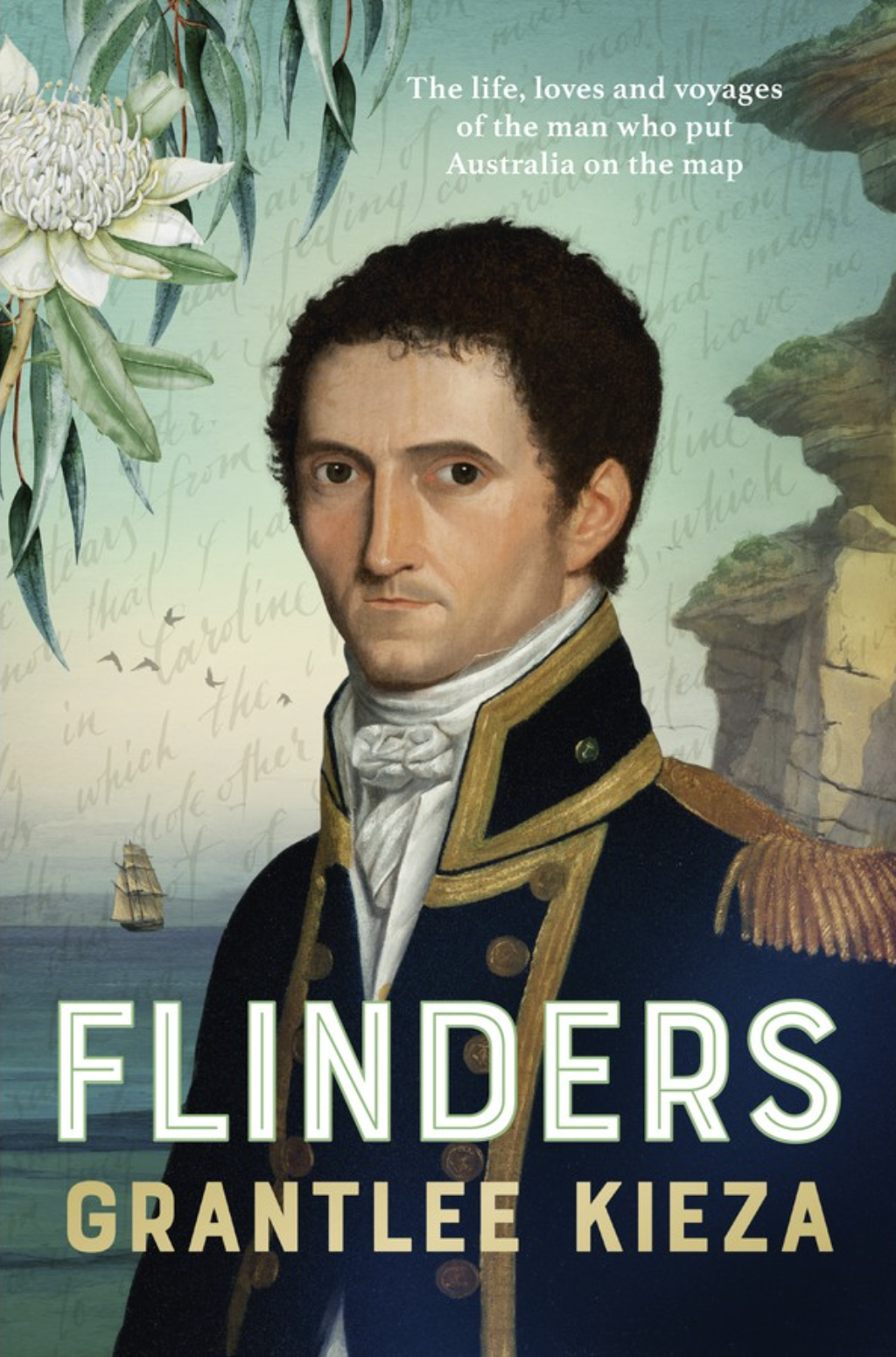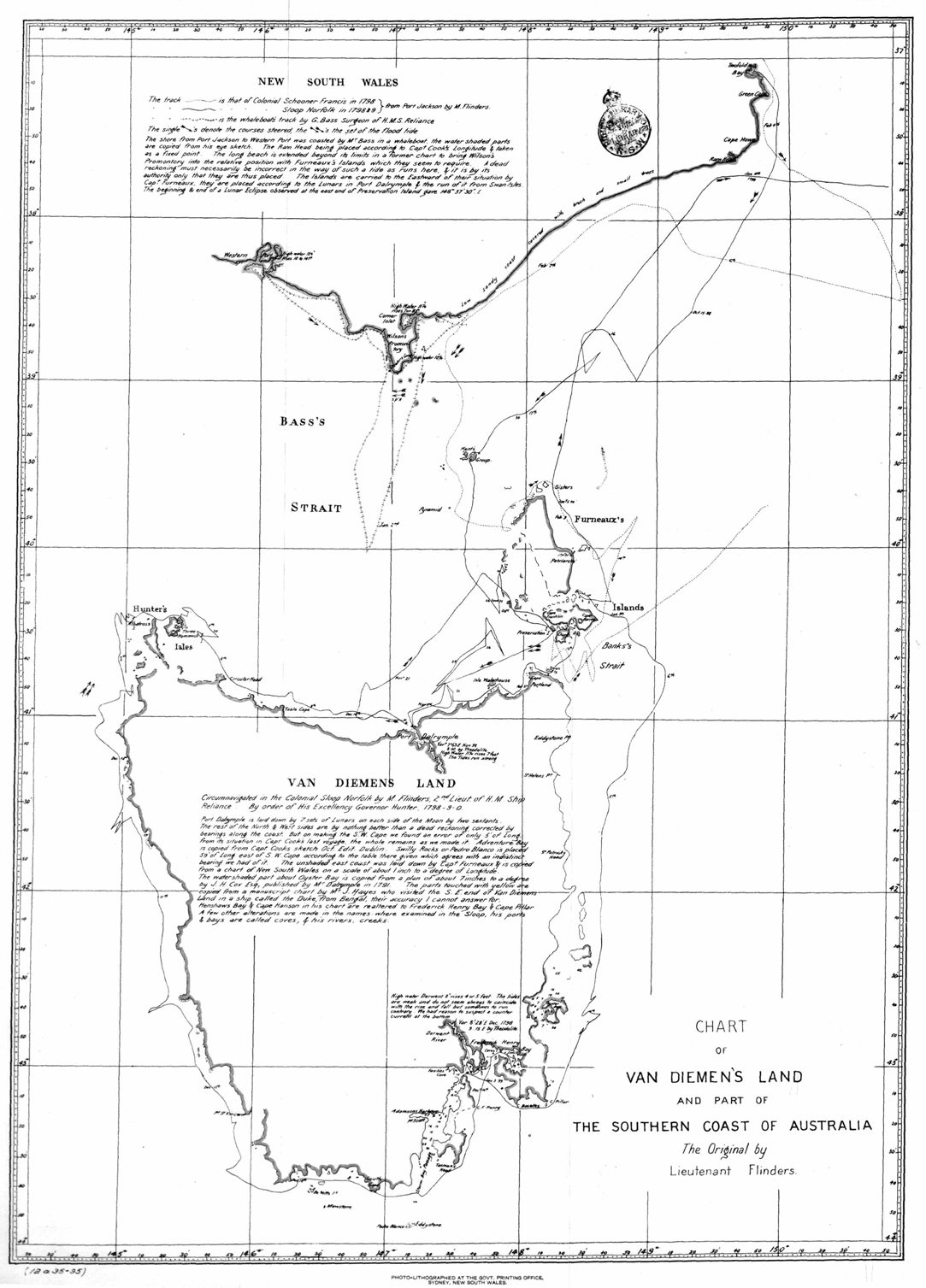Facts over Truth-A new Biography of Matthew Flinders
It’s impossible to live in modern Australia without brushing up against the name “Flinders” as we go about our daily lives. In Melbourne you might catch the D6 Tram down Flinders Street, alighting at the French Renaissance style Flinders St Station. In South Australia a geology student from Flinders University, might undertake field work in the nearby Flinders Ranges and in Sydney as you walk up Macquarie Street to the State Library, Matthew will observe your progress from his plinth.
I like this statue of Flinders. In his hand where we would normally expect, in statues of this era, a sword or a gun, there is a sextant, implying a desire to discover rather than dominate. Strangely though, the likeness of his cat Trim on a nearby window ledge, is rather awkward and shapeless.
This January we sailed slowly through Bass Strait, a place intimately connected to Matthew Flinders, so it seemed an opportune time to read the most recent of the scores of biographies of the man, a book simply called “Flinders” by Grantlee Kieza publish late last year by ABC Books.
Most people with a passing interest in Australia’s colonial history will know the bullet points of Flinders’ life.
Growing up in rural England, Flinders became fascinated with the sea, inspired by the adventure story of Robinson Crusoe and the history-making explorations of Captain James Cook. While not much more than a boy, Flinders fought in great naval battles against the French, and from a young age was at the forefront of major maritime voyages that took him right around the globe. With Sir Joseph Banks, England's foremost scientist as his mentor, Flinders set off in 1801 to discover and map the vast reaches of the great continent of the southern ocean. Flinders recorded his work, voyages and adventures in what would become his famous book and atlas, which announced to the world the true nature of the Australian continent's treasures - and its Indigenous people. Rushing home to England to his adored wife, Ann, Flinders was trapped and incarcerated off the coast of Africa as a prisoner of war, ultimately denied celebration of his great achievement.
The 440 pages, laid out in a large font, make easy reading. They are intensely researched with 26 pages of annotated endnotes, speaking to the thoroughness of the team that put this tome together. If you are looking for a detailed account of what Matthew Flinders actually did during his short life, presented in a linear and uncontroversial manner then this is the book for you. If you are looking for insights into what drove him to make his extraordinary discoveries, then perhaps avoid this biography along with Rob Mundle’s formulaic account of the man, and consider instead, doing battle with the source material itself. First published in two-volumes in 1814, Terra Australis is Flinders own account of the circumnavigation of Australia, by the man who gave our country its name.
The version edited and introduced by Tim Flannery, is an unwieldy but ultimately more effective tool for the understanding of our own history.
The issue of Flinders relationship with the indigenous people of Australia exemplifies Kieza’s anodyne approach. An approach that perhaps should not surprise us, given that the book is published by our risk adverse, tax payer funder national broadcaster. Kieza seems to go to great lengths to emphasise Flinders’ benevolence to the first nations people he encounters. A benevolence which is often not present in his personal accounts.
There are moments in Kieza’s account when the story catches fire. Descriptions of Flinders’ mapping techniques and the account of the wreck of the Sydney Cove are rare examples of passages that consume the readers attention. But they are too intimitent to carry the reader smoothly through the 400 pages of well researched facts that chronologically fill the biography.
And perhaps most damning of all… as I limped through the final chapter , I still didn’t feel like I knew the first man to circumnavigate our continent.
“Flinders” by Grantlee Kieza is published by ABC Books retails for $45AUD and is best purchased from you neighbourhood bricks and mortar bookshop!





